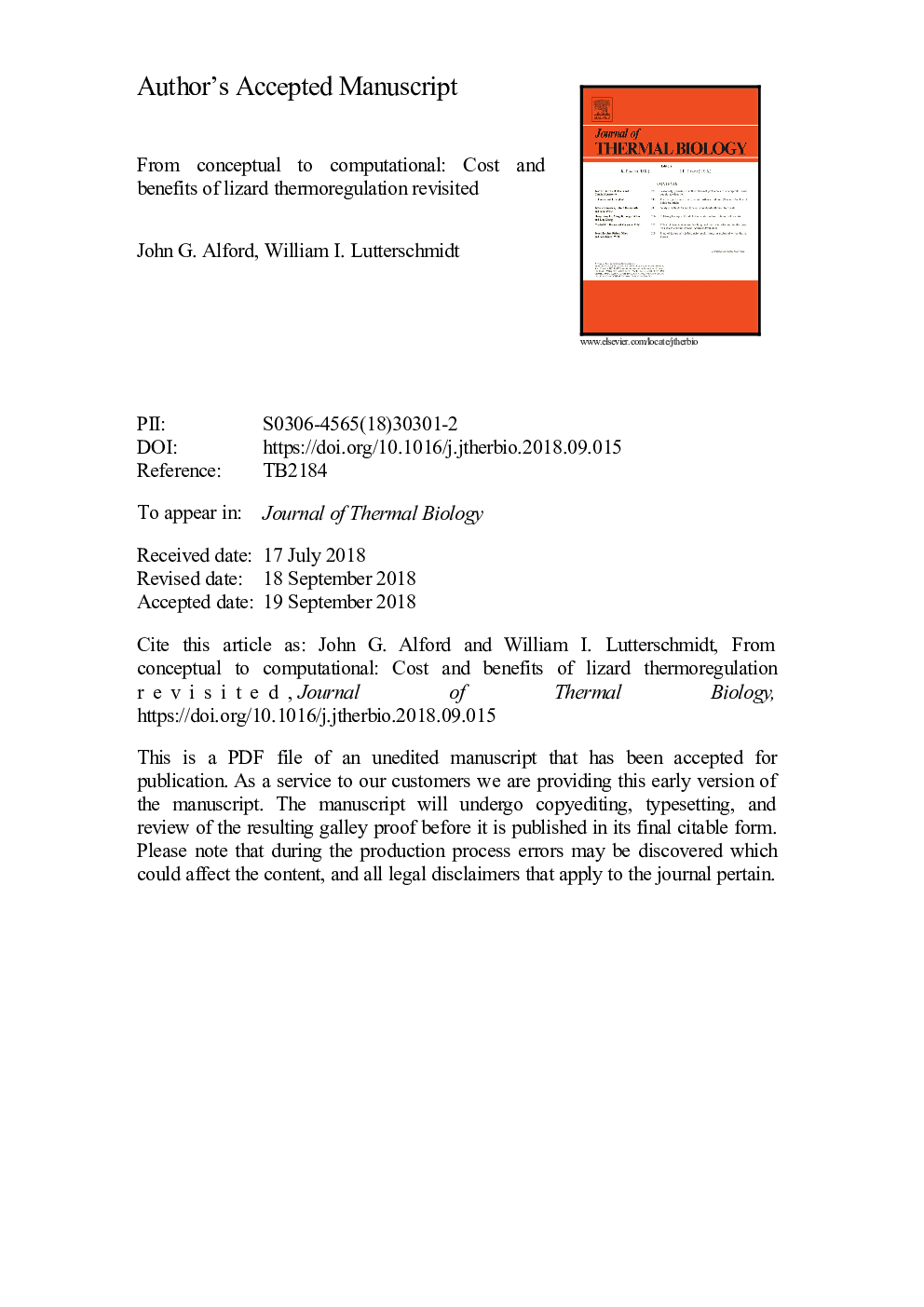| Article ID | Journal | Published Year | Pages | File Type |
|---|---|---|---|---|
| 11029204 | Journal of Thermal Biology | 2018 | 37 Pages |
Abstract
A classic paper detailed conceptual analyses of behavioral thermoregulation (Huey and Slatkin, 1976) and has served as the theoretical foundation for hundreds of investigative studies. Most recently, investigators have revisited this theoretical presentation to offer additional interpretation for both heterogeneity and spatial structure of temperature and how it may influence energetic costs (Sears and Angilletta, 2015). Interestingly, this foundational presentation by Huey and Slatkin, over 40 years ago, has never received formal computational analyses to address mathematically the postulates of this conceptual model. Here we use functions that closely mimic those that were described by Huey and Slatkin to provide both a theoretical and computational analysis for the cost and benefits of lizard thermoregulation. We demonstrate both the utility and inherent accuracy of their analyses using a model that was developed conceptually without the use of now readily available computational tools. But contrary to Huey and Slatkin's analyses, we provide a mathematical proof that perfect thermoregulation is never an optimal strategy and show by computational analysis that thermoregulatory strategy (kâ¯) may decrease, not increase, with increasing cost.
Related Topics
Life Sciences
Agricultural and Biological Sciences
Agricultural and Biological Sciences (General)
Authors
John G. Alford, William I. Lutterschmidt,
